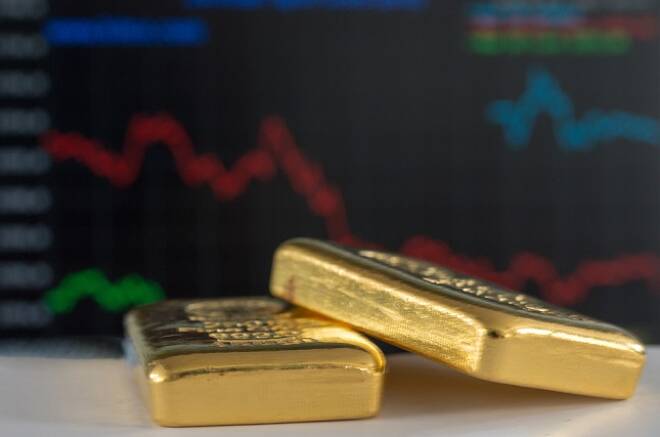Advertisement
Advertisement
Out with a Whimper
By:
In with a bang out with a whimper as the US equity markets end Q3 on a muted note. US stocks eked out a small increase in the third quarter recovering from an August tumult.
The tech sector was the overnight winner as investors continue to debate the trade war spin after the Trump administration whitewashed the broadcasting that it is discussing imposing limits on U.S. portfolio investment in Chinese companies. As a result, the markets accomplished little more than retracing Fridays sell-off overnight.
However, the latest markets shimmy is just the preliminary stages before the big dance contest October 10 when high-level trade negotiations restart. In the meantime, investors will go through their daily ritual of putting a finger in the air to test the trade war wind direction
Oil markets
Oil markets had a dreadful quarter as the global economic tumult eclipsed middle east unrest and the unparalleled terrorist attack on Saudi Arabia’s major oil facility.
Global economic data continues to run cold, and while there was a glimmer of optimism cast on yesterday’s China PMI data that came out a tad better than expected. Oil markets were not so enamoured as the middling prints were perceived nowhere near convincing enough for commodity markets that continue to struggle amidst ongoing US-China tensions. The current run of economic data offers little reason for Oil investors to be optimistic over global demand.
Also, Saudi production is ramping up more quickly than anyone expected following the September 14 attacks. Only two weeks ago, it was thought to be months and even years that were bandied around as a repair timeline. So, with the repairs headed for completion well beyond anyone’s expectations, there’s likely ample redundant capacity in the supply chain that was put in play as a safety net proviso, so there’s possibly abundant prompt supply in the global oil complex that perhaps exceeds current demand.
The possibility of a middle east military escalation continues to recede, and while the war of words is expected to extend, it’s unlikely to have a significant impact on oil prices. Moreover, neither will the US patriot missile system which is expected to be deployed for defensive measures only, as President Trump knows that any perceived offence military escalation in the middle east could send US crude prices soaring. Indeed, the Brent-WTI spreads are not suggesting traders are expecting a drastic drop in global oil supply.
The last thing President Trump wants is a rise in consumers fuel expenses which could harmfully impact broader US retail consumer spending habits. After all, the US consumer has singlehandedly bolstered the US economy for most of 2019.
Also, its possible oil traders woke up and smelled the coffee on Monday picking up on the fact that there may have been considerable downside volumes in play last week as the oil market has toggled bullish to bearish in fast order. While it’s possible at times to trade up a mean reversion storm in oil futures, however, consistently swimming against the tide in oil markets can be a hazardous proposition at the best of times.
Gold Markets
The $ 1480 trap door sprung which was thought to be a significant intersection of CTA second level stops, a critical technical resistance level and trigger point for fundamental analysts.
Gold struggled with little exacting news, but a massive shakeout like occurred overnight is usually a result of a confluence of events.
The latest commitment of trader’s report showed the most significant rise in the COMEX gold position since early August while gold ETF continued to make substantial advances. This position build confirms the market was extraordinarily unbalanced and possibly prone for a correction.
On the technical front, last week gold took out its 50-day moving average and parabolics reversed downwards.
The US dollar remains strong, indicating the greenback was hoovering up its fair share of haven flows and making gold more expensive to own globally.
Physical demand remains weak, which may have iced the rally and contributed to the 24-hour slide
Moreover, while the Trump administration talked down the broadcasting that it is discussing imposing limits on U.S. portfolio investment in Chinese companies, but that doesn’t explain the full extent of the move to the low $1460.
Possibly. Gold traders are now thinking the FOMC aggressive easing narrative may have reached its expiration date with traders now waking up to the fact that policy centrist like Fed Evans continues to double down on their hawkish rhetoric.
However, the most significant selling catalyst may have come from one of the most influential central bankers of this decade, coming on the heels of Mario Draghi in an FT interview. FT (paywall)
He said higher government spending was now more urgent than before to counter the global slowdown. More government support would help ease the pressure on the central bank as well as reduce the length of time extraordinary monetary policy remain in place
Draghi interview may have been interpreted as another central banker walking back from the zero lower bound abyss, which may have set the gold ball falling which was then exacerbated by the massive waves of stop losses triggered along the way.
This article was written by Stephen Innes, Asia Pacific Market Strategist at AxiTrader
About the Author
Stephen Innescontributor
With more than 25 years of experience, Stephen Innes has a deep-seated knowledge of G10 and Asian currency markets as well as precious metal and oil markets.
Advertisement
